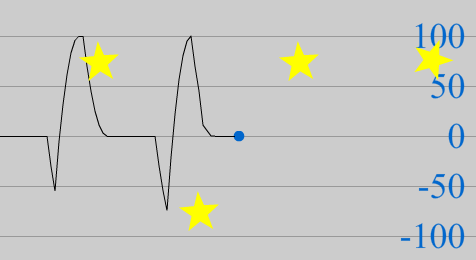Dysrhythmia development process
For most of the team, Dysrhythmia was our first experience at a game jam. And for what I can tell, it was a really positive one and we’d like to share with everyone, in the hope of helping future jammers.

The Global Game Jam is an annual global event where many participants in the world (about 16.705!) meet in their respective countries to make a game in 48 hours. This year, the theme was heartbeat. Our game come up to be a action/rhythm game where you control a heartbeat in order to get pulses and continue to live (gameplay video below).
http://www.youtube.com/watch?v=yNsU-DAj48E
And this is the development process we followed:
Preparation
First of all, we’d like to say that we’ve come prepared and with an objective in mind: we really wanted to challenge ourselves by coming with nothing done and see what we could do in 48h.We came with a previously formed team (although we added a member on site) and it was great because we knew our strengths and weaknesses and how to work together. It was pretty balanced also: 2 programmers, 2 artists, 1 producer, 1 QA and 2 game designers.
A week before the game jam begin we casually gathered at a restaurant to come with a plan. While the producer was trying to figure it out how to squeeze a week plan in 2 days, the QA started a checklist for things we had to bring (from equipment to toothpaste), the programmers were deciding what tools to use and designers and artists were researching other year’s themes and best games to get inspiration. This was a low cost practice and helped us a lot.
Brainstorm
Well, let’s get back to the process. When we got the theme, we ran to start the brainstorm. We’ve made a quick mind map about the theme and narrowed to 3 main subjects: the heartbeat rhythm, heartbeat changes according to feelings and heartbeat as representation of life.
Also, one of the guidelines of the brainstorm was basically: don't bite off more than you can chew. This was a key success factor. Some teams are extremely creative and want to put all ideas in a game and we’ve almost fall for it, but… we had 48h, so we had to be realistic.
In the end of one hour and a half we had two ideas and we voted for each one the team would like to develop and the EKG inspired one won. The basic idea was: you control the heartbeat up and down to get “pulses” according to the beat, so the EKG was drawn. If you don’t get enough, you die. We still didn’t have the design 100% done, but we had enough to get started.
At this point we also got really lucky: one sound designer passing by jumped to our brainstorm and offered his work (this was crucial, because if it hasn’t happened, we probably wouldn’t have done a rhythm game). So the lesson here is: don’t forget the sound design of your game!
Development
The design was improved on the next few hours and in a short time we had a prototype so we could try patterns for the balancing. This was another lesson learned: Rest. Seriously, get some rest. Although it can be really exciting seeing a game come to life in just 48h, you don’t want to get yourself killed. Lack of sleep can result in: bad-mood, bad thinking, bad decisions and in the end, a bad project. In our case, the game balancing was created at 3 am and trying to remember combinatory analysis at late night resulted in a balancing that could be ten thousand times better.We’ve been through that and, in the future, we’d shrink our game a little more, so it could be done in less time with more sleep hours.
If on one hand the creation of the prototype in the first 6h was a hit, the first playable too late, being delivered for testing after 40h of jam. Having only 8 hours to test and polish, increased project risk, because of the incidence of bugs, and for the fun factor validation. In the end everything worked out, but with a little luck, since the uncertainty level was relatively high, because it was an innovative game. 
Dysrhythmia Prototype
Because the design was made on demand, and “daily scrums” were 10h apart, at some moments, it happened communication failures and probably a simplified and efficient documentation of game design, such as one page design samples, could have prevented such circumstances.
In the rest of the following days, it was a mix of work, food, iteration and more work. Although the use of scrum was successful, even with a bigger team than scrum recommends, the week plan in 2 days didn’t work. Luckly, the producer had experience enough to take fast decisions and replan the whole thing by the hour. This, I must say, is an important strength in our team, as well as flexibility, because it made us through 48h with a fun game, which we hope to continue developing.
Please check it out and give us feedback.
Thanks!
Dysrhythmia Team
Read more about:
BlogsAbout the Author(s)
You May Also Like







.jpeg?width=700&auto=webp&quality=80&disable=upscale)








